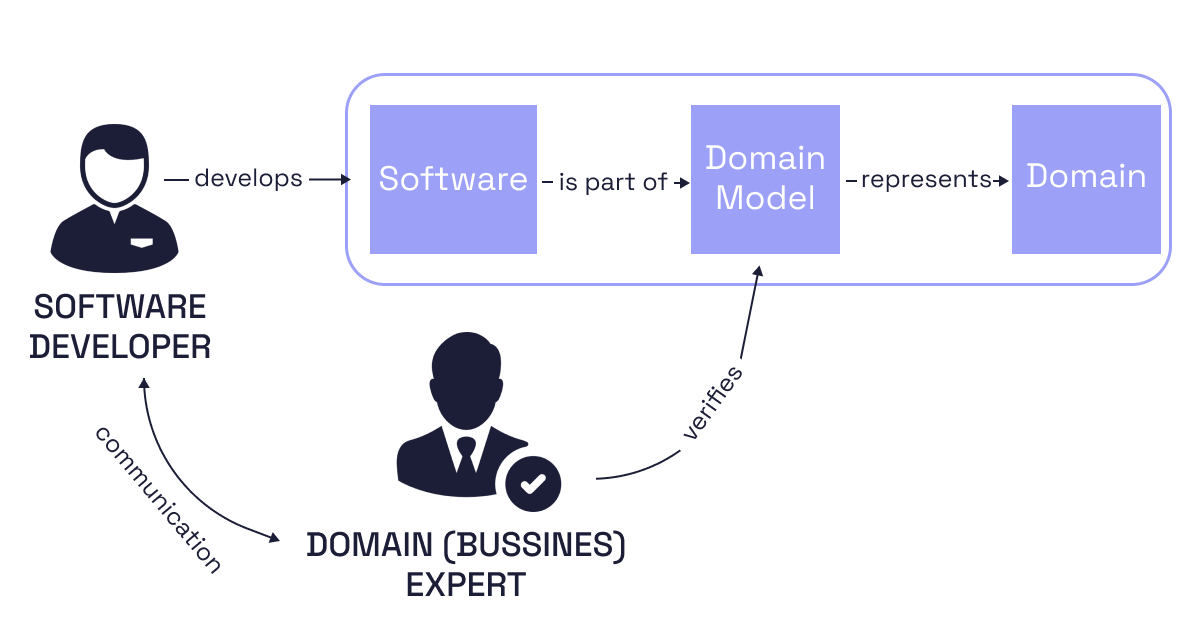Domain-Driven Design (DDD): Building Scalable Software Systems
Meta Description: Domain-Driven Design (DDD) enables scalable software systems by aligning business needs with technical implementation. Learn its principles, benefits, and best practices.
What is Domain-Driven Design (DDD)?
Domain-Driven Design (DDD) is a software development approach that focuses on aligning software systems with complex business domains. It emphasizes collaboration between domain experts and developers to ensure that software reflects real-world scenarios accurately. By structuring the system based on domain knowledge, DDD helps build scalable and maintainable applications.
Core Principles of DDD
1. Ubiquitous Language
DDD promotes a common language shared by developers and domain experts. This language reduces miscommunication and ensures that all stakeholders understand the system’s functionalities clearly.
2. Bounded Contexts
A bounded context defines a boundary within which a specific domain model applies. It helps prevent conflicts between different parts of the system by maintaining clear separations.
3. Aggregates
An aggregate is a collection of related objects that must be treated as a single unit. It ensures data consistency and defines transaction boundaries.
4. Entities and Value Objects
- Entities: Objects with distinct identities that persist over time (e.g., a customer or an order).
- Value Objects: Immutable objects that are identified by their values rather than unique identities (e.g., an address or a price).
5. Domain Events
Domain events capture changes in the domain, allowing different parts of the system to react to them without tight coupling.
6. Repositories and Factories
- Repositories: Provide an interface to retrieve domain objects, ensuring a clear separation between the domain and data layers.
- Factories: Handle the creation of complex domain objects while maintaining encapsulation.
Benefits of Domain-Driven Design
1. Improved Scalability
DDD structures the system around domain logic, making it easier to scale as business requirements grow.
2. Enhanced Collaboration
By using a common language, developers and business stakeholders can work more efficiently, reducing misunderstandings.
3. Maintainability
Clear separation of concerns and well-defined boundaries make the system easier to modify and extend.
4. Flexibility and Adaptability
DDD allows businesses to evolve their software in response to changing market demands without major overhauls.

Best Practices for Implementing DDD
1. Invest in Domain Knowledge
Understand the business domain thoroughly before designing the system. Collaborate with domain experts to refine models.
2. Define Clear Boundaries
Use bounded contexts to ensure that different parts of the system operate independently, reducing unnecessary dependencies.
3. Keep Domain Logic Separate from Infrastructure
Avoid mixing business logic with infrastructure concerns like databases or APIs to maintain clarity and reusability.
4. Use Event-Driven Architecture
Implement domain events to decouple system components and improve scalability.
5. Continuously Refactor
Refine the domain model as business needs evolve, ensuring it remains relevant and effective.

Real-World Applications of DDD
1. E-Commerce Platforms
DDD helps manage complex business rules, such as inventory management, pricing, and customer orders, ensuring scalability.
2. Banking and Finance
By structuring financial transactions around domain logic, DDD ensures data consistency and security.
3. Healthcare Systems
DDD models patient records, treatments, and medical workflows effectively, improving patient care.
4. SaaS Applications
Scalable SaaS solutions use DDD to manage multi-tenant architectures and domain-specific functionalities efficiently.

Conclusion
Domain-Driven Design (DDD) is a powerful methodology for building scalable, maintainable, and flexible software systems. By focusing on domain knowledge, defining clear boundaries, and leveraging best practices, businesses can develop systems that evolve with their needs. Implementing DDD requires collaboration, ongoing refinement, and adherence to principles that bridge the gap between technical and business teams.
Key Takeaways:
- Domain-Driven Design (DDD) aligns software systems with business domains for better scalability.
- Core concepts include ubiquitous language, bounded contexts, aggregates, and domain events.
- DDD enhances maintainability, flexibility, and collaboration between developers and stakeholders.
- Best practices include investing in domain knowledge, defining clear boundaries, and adopting event-driven architecture.
- Real-world applications span e-commerce, finance, healthcare, and SaaS platforms.
By following DDD principles, organizations can build robust and future-proof software systems tailored to business needs.


